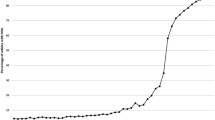Abstract
To date, there is no unique accepted and standardized method for identifying journal articles, authors, and other elements of bibliographic metadata, although in recent years a considerable number of identifiers have been developed. The problem of identification becomes particularly urgent when the same information is used in different scientometric and bibliographic databases, when it is necessary to carry out complex data processing with their further integration. The need for unique identifiers outside of a system is a universal requirement. Initiatives to construct identifiers and systems appear regularly in the scientific press; however, they have not achieved the necessary degree of interoperability. This paper presents the general problems that are associated with metadata identifiers of scientific publications, analyzes a number of the existing systems and technologies, and indicates the current initiatives to remove the gap in the area of identification.
Similar content being viewed by others
References
Paskin, N., Information identifiers, Learn. Publ., 1997, vol. 10, no. 2, pp. 135–156.
Yao, L., Tang, J., Li, J., A unified approach to researcher profiling, Proceedings of the ieee/wic/acm International Conference on Web Intelligence, 2007, pp. 359–365.
Bezdushnyi, A.N., Kulagin, M.V., Serebryakov, V.A., et al., Suggestions on metadata sets for scientific information resources, Vych. Tekhnol., 2005, vol. 10 (S1), pp. 29–48.
Jörg, B., Höllrigl, T., Sicilia, M.-A., Entities and identities in research information systems. E-infrastructures for research and innovation, Linking Information Systems to Improve Scientific Knowledge Production: Proceedings of the 11th International Conference on Current Research Information Systems (June 6–9, 2012, Prague, Czech Republic), pp. 185–194.
Jörg, B., Ruiz-Rube, I., Sicilia, M-A., Dvorak, J., Jeffery, K., Höllrigl, T., Rasmussen, H.S., Engfer, A., Vestdam, T., Garcia Barriocanal, E. Connecting closed world research information systems through the linked open data web, Int. J. of Software Eng. and Know. Eng., 2012, vol. 22(3), pp. 345–364.
Digital Object Identifier. http://dx.doi.org. Cited June 2, 2014.
Mazov, N.A., Gureev, V.N., Problems of metadata identification scientometric Web of Knowledge, Scopus, and RSCI databases by the example of author, Biblioteki i informatsionnye resursy v sovremennom mire nauki, kul’tury, obrazovaniya i biznesa: 19-ya mezhdynar. konf. “Krym 2012” (Sudak, 2012): Trudy konf. (Libraries and Information Resources in the Modern World of Science, Culture, Education, and Business: the 19-th International Conference “Crimea 2012” (Sudak, 2012): Proceedings of the Conference, Moscow: Izd. GPNTB Rossii, 2012, pp. 1–4. http://www.gpntb.ru/win/inter-events/crimea2012/disk/124.pdf. Cited June 2, 2014.
Mazov, N.A., Gureev, V.N., Identification of bibliographic metadata of scientific publications in different databases: problems and decisions, Materialy 8-oi Mezhdunar. Konf., posvyashch. 60-letiyu VINITI RAN “Aktual’nye problemy informatsionnogo obespecheniya nauki, analiticheskoi i innovatsionnoi deyatel’nosti, NTI-2012” Materials of the 8th International Conference Devoted to the 60th Anniversary of the VINITI RAS “Current Problems of Information Support for Scientific, Analytical and Innovative Activities, NTI-2012”), Moscow, 2012, pp. 123–124. URL: http://www.viniti.ru/download/russian/prog8.pdf. Cited June 2, 2014.
Mazov, N.A., Gureev, V.N., New methods of forming a publication profile of a scholarly institution in scientific network, Nauchn. Tekh. Bibl., 2013, no. 12, pp. 42–48.
Shibboleth. http://shibboleth.internet2.edu. Cited June 2, 2014.
Enserink, M. Are you ready to become a number? Science, 2009, vol. 323(5922), pp. 1662–1664.
ResearcherID. http://www.reseacherid.com. Cited June 2, 2014.
ORCID. http://www.orcid.org. Cited June 2, 2014.
CrossRef: A Short History, 2009. http://www.cross-ref.org/08downloads/CrossRef10Years.pdf. Cited June 2, 2014.
Bizer, C., Heath, T., Berners-Lee, T. Linked data — the story so far, Int. J. Sem. Web Inf. Syst., 2009, vol. 5(3), pp. 1–22.
OpenID Foundation. http://openid.net/foundation. Cited June 2, 2014.
Author information
Authors and Affiliations
Corresponding author
Additional information
Original Russian Text © N.A. Mazov, V.N. Gureev, 2014, published in Nauchno-Technicheskaya Informatsiya, Seriya 1, 2014, No. 9, pp. 32–37.
About this article
Cite this article
Mazov, N.A., Gureev, V.N. The role of unique identifiers in bibliographic information systems. Sci. Tech.Inf. Proc. 41, 206–210 (2014). https://doi.org/10.3103/S0147688214030101
Received:
Published:
Issue Date:
DOI: https://doi.org/10.3103/S0147688214030101




